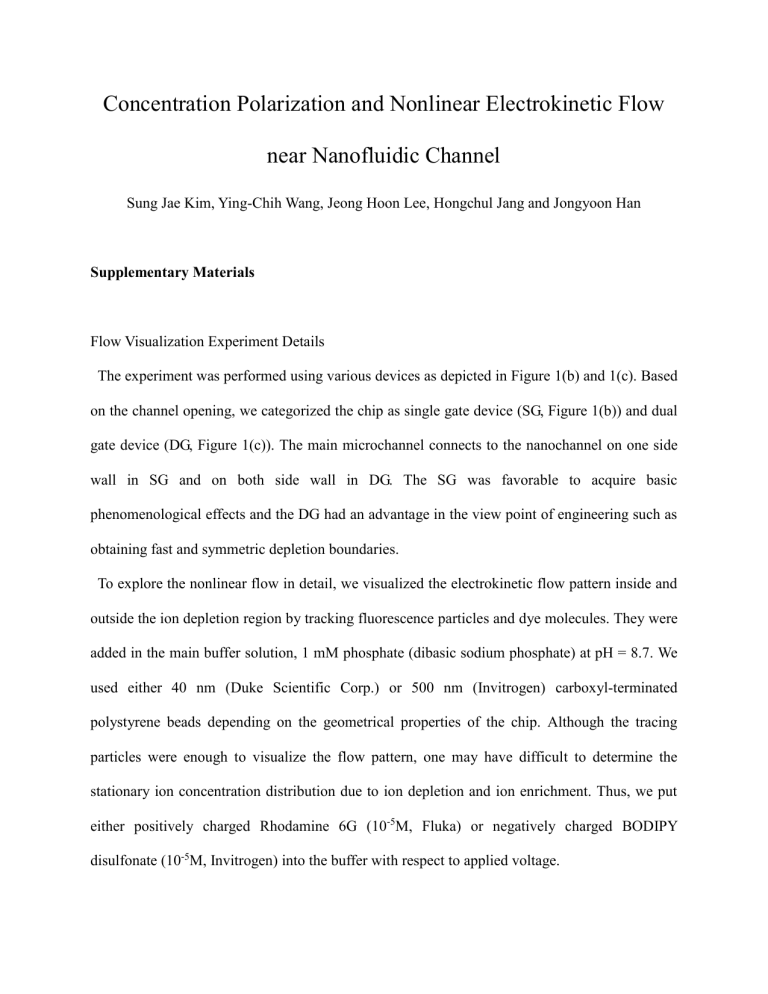Concentration Polarization and Nonlinear Electrokinetic Flow near

Concentration Polarization and Nonlinear Electrokinetic Flow near Nanofluidic Channel
Sung Jae Kim, Ying-Chih Wang, Jeong Hoon Lee, Hongchul Jang and Jongyoon Han
Supplementary Materials
Flow Visualization Experiment Details
The experiment was performed using various devices as depicted in Figure 1(b) and 1(c). Based on the channel opening, we categorized the chip as single gate device (SG, Figure 1(b)) and dual gate device (DG, Figure 1(c)). The main microchannel connects to the nanochannel on one side wall in SG and on both side wall in DG. The SG was favorable to acquire basic phenomenological effects and the DG had an advantage in the view point of engineering such as obtaining fast and symmetric depletion boundaries.
To explore the nonlinear flow in detail, we visualized the electrokinetic flow pattern inside and outside the ion depletion region by tracking fluorescence particles and dye molecules. They were added in the main buffer solution, 1 mM phosphate (dibasic sodium phosphate) at pH = 8.7. We used either 40 nm (Duke Scientific Corp.) or 500 nm (Invitrogen) carboxyl-terminated polystyrene beads depending on the geometrical properties of the chip. Although the tracing particles were enough to visualize the flow pattern, one may have difficult to determine the stationary ion concentration distribution due to ion depletion and ion enrichment. Thus, we put either positively charged Rhodamine 6G (10 -5 M, Fluka) or negatively charged BODIPY disulfonate (10
-5
M, Invitrogen) into the buffer with respect to applied voltage.
Current Measurement Experiment Details:
To measure the I-V profile of the nanofluidic channel, Keithley 236 Current/Voltage Source-
Measure Unit (Keithley Instruments, Inc.) was connected to the device as shown in Figure 2(c).
To control the level of electrical double layer overlapping, phosphate buffers were used at concentration between 1 to 50 mM (dibasic sodium phosphate, pH = 8.7). Meanwhile, 33 nM
GFP molecule was introduced in the anodic side of the device to track the depletion pattern.
Experimental Setup Details:
All the flow and depletion patterns were imaged with an inverted fluorescence microscope (IX-
51) which has CCD camera (SensiCam, Cooke corp.). To avoid the saturation of pixels, we carefully adjust the exposure time, image contrast and brightness. Sequences of images were analyzed by Image Pro Plus 5.0 (Media Cybernetics inc.). A DC power supplier (Stanford
Research System, Inc.) was used to apply electrical potential to each reservoir through a homemade voltage divider.











